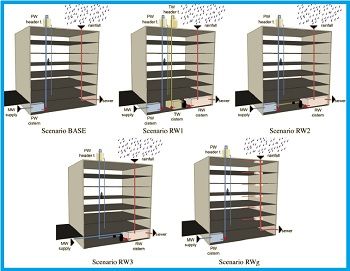The Water-Energy-Carbon Nexus: Optimising Rainwater Harvesting in Mexico City
24 mayo 2016
M. Carmen Valdez
Ilan Adler
Mark Barrett
Ricardo Ochoa
Angel Pérez
Environ. Process. (2016) 3:307–323
DOI 10.1007/s40710-016-0138-2
This study compares greenhouse gases emissions and energy consumption of
buildings supplied by the municipal water grid in Mexico City against different configurations of rainwater harvesting systems. A comparative simulation model was built for this purpose. Life-cycle assessment methodology was used to embrace impacts not only from operation (e.g. pumping energy) but also from building the system (e.g. materials, their transportation, etc.).
This analysis is essential to improve Mexico City’s water management. The city’s aquifer is overexploited, which has caused land subsidence; the city is prone to flooding for being located in an endorheic basin and highly urbanised; it consumes 1.23 kWh/m3 to supply water to the municipal grid (65 \% of it to import 18 \% of its water demand from neighbouring basins); and between 30\% and 50 \% of this water is lost through grid leakages. The model was used to analyse eleven different types of buildings. Results proved that rainwater harvesting can reduce greenhouse gases emissions in Mexico City and three of the four harvesting scenarios also aid at mitigating flooding risk.


